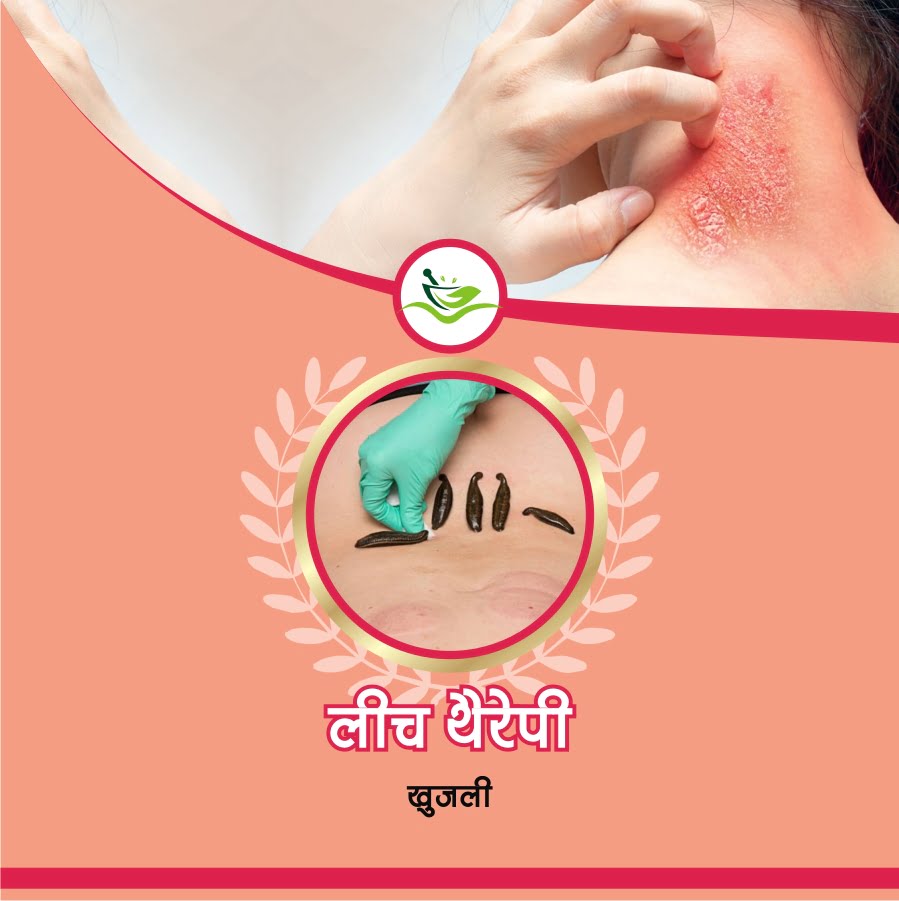Raktamokshan
Raktamokshana, or bloodletting, it is an important part of the clinical therapeutic use of Panchakarma in the management of several important disease conditions. Raktamokshana is an effective blood purification therapy, in which carefully controlled removal of small quantities of impure blood is conducted to neutralize accumulated toxins. when excess toxicity of rakta and pitta has occurred so much so that it cannot be cured by herbs or any other procedure, raktamokshan comes to the rescue. Although Raktamokshana is the most limited of the five major procedures, it provides a rapid and sometimes dramatic reduction of symptoms in certain acute disorders where there is no time for the various phases of Panchakarma like Purvakarma (Preparation for Panchakarma), etc. Raktamokshana can be helpful.
Types
In Ayurveda, there are two types of rakta mokshana:
Shastravisravana. The use of metallic instruments is divided into two categories:
A)Siravyadhana, which we know today as venipuncture, uses a syringe to remove blood from a vein. B)Pracchana: letting the blood exude out through several superficial incisions made in the skin with a metallic blade or scalpel. A sub-type of the latter is Alabupracchana. This is the use of a bottle gourd, or other conical-shaped vegetables, to create a vacuum over the incisions. It is similar to and the forerunner of Chinese and European wet cupping which appeared later.
Anushastravisravana. Methods that do not use metallic instruments. This is divided into 2 categories:
Jalaukavacharana: and applying leeches to a particular area. This and alabupracchana are currently the most common methods of raktamokshana.
Shrungavacharana, which means using a cow’s horns. This is mainly used for treating Pitta/Rakta conditions accompanied by a high degree of Vata vitiation.
Diseases occurring due to vitiation of blood and pitta shall be dealt with with bloodletting.
Raktamokshana is effective in conditions like allergies, tonsillitis, sciatica, gout, acne, migraine, eczema, psoriasis, Lyme disease, filariasis, glaucoma, liver & spleen disorders, osteoarthritis, rheumatoid arthritis, frozen shoulder, rheumatic disease, diabetic wounds, non-healing ulcers, varicose veins, elephantiasis, abscesses, tumors, erysipelas, sexually transmitted diseases, breast diseases, hypertension, thrombosis (blood clot), and alopecia, psychological problems, vishamjwar (fever), epilepsy, etc. Contraindications of Raktamokshana: Generalized swelling, swelling in debilitated persons, caused by sour diet and that in those suffering from Pandu(anemia), Arches(bleeding piles), Udara(ascites), and Garbhini(pregnancy).
Procedure
The procedure is divided into 3 parts
1. Purva Karma (preoperative procedure)
In the preoperative procedure. Snehana (oleation) internal and external, Sweden(hot fomentation with steam to the whole body)
2. Pradhan Karma(operative procedure)
a) By using jalauka(leeach)
The patient is made to lie on the bed comfortably. The leach is applied over the affected part. The leech starts to suck blood when its mouth becomes raised and appears like a horse’s hoof. If the leech does not suck blood a drop of milk is put on the spot or a small prick with a sterilized needle is taken. Wet cotton is kept over the body of the leech to keep it moist and alive. The leech leaves the spot after a while or is deliberately removed when the patient experiences pricking pain at the site. (This pain indicates that the Leach is sucking pure blood)
b) Siravedha (venous puncture)
The patient is asked to lie comfortably over a bed. The air cuff of the sphygmomanometer is tied over the bicep muscle of the hand. The patient is asked to clench his fist tightly. The cuff is inflated and the desired vein(medial cubital is preferred) is punctured with a sterilized scalp vein(butterfly) needle. Cuff is removed and the blood is collected in a kidney tray. When a sufficient quantity of blood is drawn the needle is withdrawn and the patient is asked to loosen his fist. A cotton swab is pressed over the wound.
3. Paschat karma (post-operative procedure)
If bleeding continues from the diseased site fine powders of Lodha (Symplocosracemosa), yastimadhu(Glycyrrhizaglabra),raktachandana (PterocarpusSantalinus), etc. are applied. The area is covered is a wet cloth or a thin paste of cooling dravya like Chandan is applied.
The patient is advised to take rest and can be given a light diet or milk later in the evening.
Rice flour is applied to the whole body of jalauka and little siandhava lavana (rock salt) and oil are applied to its mouth. And it is squeezed gently from tail to mouth in order to remove the sucked blood. Now jalauka is immersed in water and can be used after a span of seven days.


